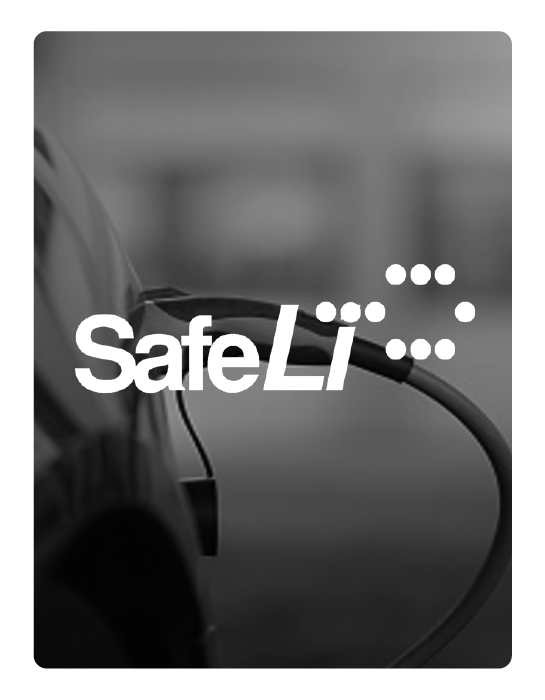SafeLi LLC will help power the wireless world with next-generation materials while offering a safer solution for users of electric vehicles, power tools, consumer electronics, and many other devices that draw energy from Li-ion batteries.
SafeLi LLC is a women-founded, university incubated start-up working to commercialize a new material – the first recognized carbon-based nanomaterial, named Graphene Monoxide (GmO). This is a solid form of carbon monoxide with 2- dimensional (2D) crystal structure. The oxygen and carbon atoms, in 1:1 ratio, are ordered in a centered rectangular crystal lattice in GmO, making it fundamentally different from the 3D graphite oxide and 2D graphene oxide, in which oxygen is non- stoichiometric and disordered—while carbon is ordered—in a hexagonal graphene lattice. GmO can be used in lithium-ion batteries to improve their capacity, speed of charge and safety for applications in electric vehicles (EVs), power tools, and other consumer electronics.
Using a transmission electron microscope, University of Wisconsin-Milwaukee (UWM) physicists Carol Hirschmugl and Marija Gajdardziska-Josifovska discovered graphene monoxide (GmO) – a 2D material and the first solid form of carbon monoxide that exists at room temperature and pressure. With this exciting discovery on their hands, the scientists had to make a choice: find satisfaction in their discovery and move on, or realize its potential through research and product development. Choosing the latter, the two physicists co-founded SafeLi, a startup incubated at UWM that produces lithium-ion battery materials. With its patented material, SafeLi can boost the storage capacity of lithium-ion batteries that exceeds current graphite- based li-ion batteries on the market.
National Science Foundation (NSF) and Department of Energy (DOE) Small Business Innovation Research (SBIR) and Small Business Technology Transfer (STTR) funding proved critical to developing SafeLi’s understanding of how to navigate a new industry and bring the discovery to market. The SBIR and STTR funds have provided a mechanism to accelerate research and development activities and license intellectual property from UWM to the start-up, SafeLi. Access to the university facilities, including state-of-the-art scientific equipment such as the transmission electron microscope and a one-of-a-kind battery lab built by Johnson Controls, has been critical to accelerate the path to market for SafeLiʼs novel material. These resources supported efforts needed to scale up the production, demonstrate the materials properties in prototype batteries, and to develop a viable business model. Without the SBIR and STTR funding, the SafeLi material would have remained a patent with limited research and development efforts. The funding allowed for the necessary “de-risking” that it takes to get a patented product to market with traction and interest at a commercial level. The company is now in the exploratory phase with investors and 8 jobs have been created.
Successful development of SafeLiʼs high-tech products, will produce a cost-effective material for higher performance safer energy storage applications, with profound benefits for products like EVs. Improved high energy anode materials will generate better batteries, thus making EVs more affordable, convenient, and safer. Efficient electric engines reduce air pollution by eliminating carbon dioxide and smog (from NOx emissions) and decrease oil consumption. When commercialized, SafeLiʼs novel, patented GmO has the potential to disrupt the lithium-ion battery market by doubling the capacity of these batteries and charging them six times faster than todayʼs batteries resulting in increased mileage. This innovation has the potential to help power the wireless world with next-generation materials, while offering a safer solution for users of EVs, power tools, consumer electronics, and many other devices that draw energy from lithium ion batteries.


